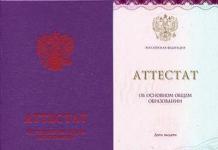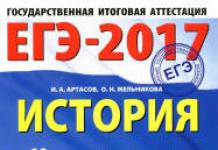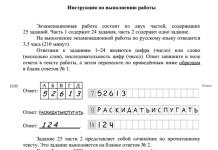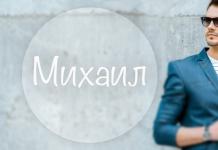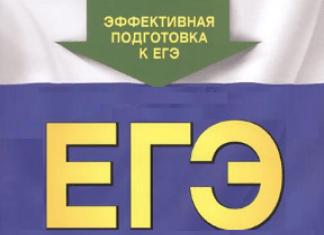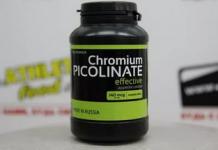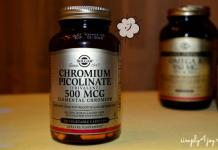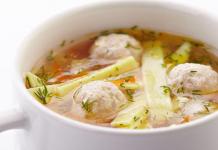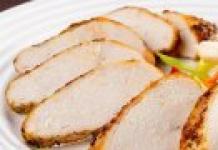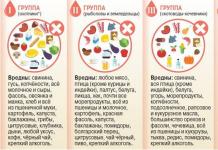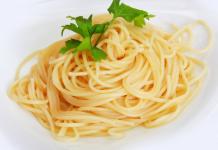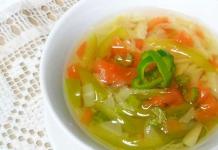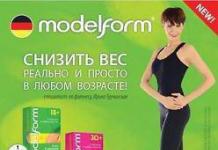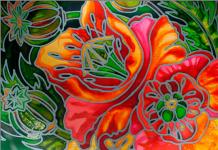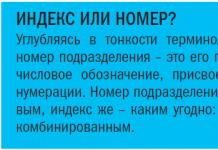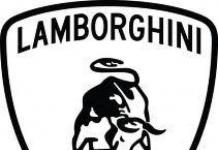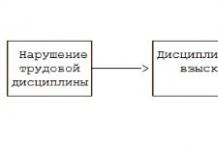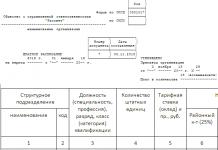Thermite welding is a method of welding when a thermite mixture is used to heat the metal. Welding technology consists of the following processes:
- "forming" the parts to be joined with refractory material;
- heating of connected parts;
- thermite melting process;
- pouring molten thermite into the welding area.
Thus, the metal from the molten parts is combined with the thermite in a liquid state. Such a connection will guarantee strength and reliability. Basically, this type of welding, unlike arc welding, is used for fusion of cast iron, steel, restoration of cracks, joining of rails, as well as pipes.
The most commonly used iron-aluminum thermite welding: Fe2O3 = 75%; Al = 25% (such a mixture contains either calcined scale or iron ore). Such a composition is used mainly for welding rails and many dimensional parts. This mixture ignites at a temperature of approximately 1300 °C, and the slag and iron that are formed are heated to 2400 °C. Quite often, iron trim, alloying additives and fluxes are added to the iron-aluminum mixture. This process takes place in a magnesite crucible.
Aluminum is not the only metal that is used. The following combinations are also used:
- Mg (31%) + Fe2O3 (69%)
- Ca (43%) + Fe2O3 (57%)
- Ti (31%) + Fe2O3 (69%)
- Si (21%) + Fe2O3 (79%)
Thermite-incendiary compositions:
- Ba(NO3)2 (26%) + Fe3O4 (50%) + Al (24%)
- Ba(NO3)2 (37.5%) + Al (26.5%) + coal (3%) + shellac binders (23%)
- Fe2O3 (21%) + Al (13%) + Ba(NO3)2 (44%) + Ba(NO3)2 (6%) + Mg or Fe (12%) + binders (4%)

Thermal welding is used for various purposes and for each of them a certain composition of the mixture is selected. The most common among them are the following types:
- Elemental mixture: iron scale combined with aluminum powder in strict chemical proportion;
- Thermite mixture for joining joints in rails: this procedure is more complicated. Aluminothermic welding of rails consists in introducing steel filler into the charge. Such a filler consists of ferromanganese, graphite (in the form of shavings) and small parts of a low-carbon rod or shavings of the same material;
- Composition for joining alloyed steels. Such a mixture is characterized by the use of additives in the form of ferrotitanium, ferrovanadium and other similar materials;
- Thermite welding used for welding cast iron parts: as an additive, silicon is usually used in large quantities. With this solution, a very high quality joint can be obtained (subject to the rules of the processes), this is justified by the release of graphite, both in the welding and in the transition zones. This reaction is due to the high content of silicon in the thermite metal. The main requirement is the complete exclusion of the use of manganese;
- Composition for joining high-manganese steels: the content of this mixture is quite simple. It is necessary to introduce ferromanganese (carbon and a large amount of manganese), as well as cast iron shavings in a stoichiometric ratio;
- Special (special) termites - used for all other needs (re-crushing of minerals), such mixtures are called pyrotechnic.
Aluminothermic welding process
This welding technology consists of several successive and interrelated processes.
First you need to make sure that the thermite mine is designed thoroughly and the necessary heat can be released in the process. This is necessary for melting and heating all the final reaction products with your own hands. The composition of the thermite charge includes small particles of aluminum powder and iron oxides.

In addition to the composition of a very small size, all components must be thoroughly mixed. To start a chemical reaction with your own hands, you only need to give an impetus with a temperature of 1350 C. The supply of such a temperature is sufficient at one point, and after that the thermal reaction will spread to the entire thermite charge. For the formation of a full-fledged metal, 20-30 seconds are enough. Moreover, the weight of the resulting metal will be less by 50% of the entire thermite charge, since in addition to the metal, slag is formed.
Heat during the reaction will be spent not only on the reagents presented, but also on other consumables (for example, the walls of the crucible). Despite this, the heat that will be released is enough to obtain the desired result. With proper observance of all these recommendations, the pure metal will sink to the bottom, and the slag will float. This is due to the difference in the specific gravity of the presented materials.
Rail connection with aluminothermic welding
Bathtub welding of rails is a rather complex process, and a large number of techniques and methods can be used, but not all of them are suitable for field work.
Welding rail joints with aluminitemite is extremely well suited for this type of work because of its efficiency and convenience. In this process, an igniter is used, which raises the temperature with a single charge. Such a mechanism does not require additional electrical energy, which is important in the field. The result of the reaction is already visible after 20 seconds: getting pure metal and slag with your own hands.
The step-by-step technology for welding rail joints consists of the following steps:
1. Preparation of the ends. A tight fit of the joints for this type of welding is unacceptable. Between the rails it is necessary to maintain a gap of 2-3 cm.

2. Alignment. To form a high-quality seam, the parts to be joined must be aligned

3. Installing the refractory mold

Important! You should carefully monitor the correct installation of the form and prevent it from being skewed.

Thermite welding of rails on a railway is a rather complicated process. The desired result of each master is to obtain a durable, strong and high-quality connection. To do this, you need to follow these tips
- it is important to accurately calculate the required materials, in contrast to arc welding. You should choose the amount of powder that is needed to fill the mold near the rail;
- the mixture of thermal charge should be crushed and mixed as thoroughly as possible;
- it is worth serving a temperature of at least 1400 C, otherwise the reaction will not occur.
How to make your own thermite
To make your own thermite mixture, you will need rust and aluminum powder. Rust can be obtained at home, if it is wet, then it is worth drying it with a stove. Then you should turn your rust into powder and heat it in a metal vessel. Making thermite with your own hands requires little effort and expense. Aluminum powder (you can buy or get it with a file from a whole piece of aluminum with your own hands) must be added to the iron oxide. The ratio of rust to aluminum would be 8 to 3.
Array ( => [~TAGS] => => 63344 [~ID] => 63344 => Application and composition of thermite mixture [~NAME] => Application and composition of thermite mixture => 1 [~IBLOCK_ID] => 1 => 115 [~IBLOCK_SECTION_ID] => 115 =>
General information and composition
Application
Traditional composition
Pyrotechnic composition
Copper mixtures
copper oxide - 70%;
copper powder - 12%;
aluminum - 10%;
Thermite pencil
DIY thermite
Cast Thermite Recipe
[~DETAIL_TEXT] =>
Auxiliary means for ensuring technological processes in construction and production often involve the use of chemical compositions. These include thermite mixtures, which have many recipes. As a result of the use of such compositions, the user receives either an increased thermal effect (in welding work), or the effect of a detonation mechanism (in pyrotechnics incendiary systems). The ingredients for the thermite mixture are mainly metal elements, but other chemical components are also found. The exact composition is determined by the conditions of use of the mixture and the effect to be obtained. One way or another, the manufacture of termites is not done by a specialist at home.
General information and composition
Chemical thermites belong to the group of unitary fuels containing combustible components and an oxidizing agent in equal proportions. The specificity of such a mixture determines its ability to ignite even without access to air. The characteristics and properties of the thermite mixture allow it to be put on a par with fickford cord and gunpowder. Homogeneous compositions can also be produced in gaseous form. For this, a combination of suitable gas and air is used. Such substances provide for higher requirements for operating conditions and maintenance, since they have a significant explosion hazard.
Application
Depending on the desired result and conditions of use, thermites can provide functions such as thermal effects and pyrotechnic effects. Pyrotechnic compositions can be used as means of lighting and in the manufacture of signal lights. But the main direction of the practical use of thermites is welding. The compounds obtained as a result of exposure to thermal energy are strong and durable.
The principle of operation of the thermite mixture during the formation of seams is to melt the composition of metal components, which provides a reliable anti-corrosion connection. But it is important to take into account that the welding system required for the implementation of thermal welding on pipelines provides not only a copper thermal mixture, but also a crucible form with ignition.
Traditional composition
In the classical view, chemical thermite is a mixture of finely divided components of iron scale and aluminum. It is these compositions that are most in demand in construction operations (usually welding) and industry. This is due to the fact that the activation of the mixture by ignition is accompanied by an increase in temperature and an active release of heat. Although thermite iron mixture is better known as ferrum, aluminum plays a key role in its action. In particular, the aluminothermic process determines the efficiency of the reactions that make it possible to weld steel structures.
Pyrotechnic composition
The basis of such compositions is also fuel and oxidizer, but in a complicated form. The components used include potassium chlorate (the main part of the composition), strontium carbonate (about a quarter) and sulfur, which colors the flame. The function of the oxidizing agent is performed by potassium chlorate, and sulfur acts as a combustible element. In the process of burning the pyrotechnic thermite mixture, heat is also actively released and the temperature rises: smoke compositions provide hundreds of degrees, and lighting reaches 3,000 °C. As a rule, pyrotechnic mixtures are not used to provide thermal effects, their combustion is accompanied by a fairly intense flame formation.
Copper mixtures
Thermites, which contain copper oxide, are usually manufactured specifically for servicing welding operations on steel gas pipelines. The high responsibility of the welds being formed necessitated an increase in the amount of released thermal energy. For this reason, the thermite copper mixture includes ferrosilicon instead of ferromanganese, which has a lower melting point. In finished form, the composition of such a mixture includes:
copper oxide - 70%;
copper powder - 12%;
aluminum - 10%;
ferrosilicon (or ferromanganese) - 8%.
This combination of elements improves the quality and reliability of welding work by increasing the amount of heat released during the melt process.
Thermite pencil
According to its composition, the thermal pencil can repeat any of the mixture recipes, but its main feature is a cylindrical shape in which the active filling is located: a burning cord and flammable elements. It is placed in a crucible mold made of heat-resistant graphite. The end of the cord is brought out into a special hole in the lid, connecting the composition of the thermite mixture of the cylinder and the ignition means in the form of a match.
During the combustion process, when welding along a flammable element, the thermal mixture pressed into the pencil will be activated. Thus, the burnout of the thermomixture will cause the heated metal filling to melt with the pipe surface and form a strong connection. The advantages of thermal pencils include two points. Firstly, there is no need to prepare a special thermal match. Secondly, the molding of the mixture itself in ready-made proportions ensures the convenience of its storage and transportation.
DIY thermite
To make a simple thermite recipe at home, you need two ingredients - iron oxide and aluminum metal. They should be taken in a pyrophoric (finely dispersed) form - in this state, the substances resemble fine dust. Depending on the volumes in which the thermite mixture should be obtained with one's own hands, special dishes are also prepared - after all the cooking operations, a vessel made of aluminum or steel can be used.
By weight, the proportions of the ingredients will be as follows: 4 parts aluminum to 3 parts scale. The components are thoroughly mixed. Further, it will not be superfluous to add magnesia (burnt potassium permanganate) to the mixture, which will act as a catalyst. It can be made in an amount that is not more than 20% of the total mass of metallic substances. Then the composition is mixed again.
As you can see, the answer to the question of how to make a thermite mixture is quite simple. But it is important to foresee the method of its application. The finished composition can be placed in a vessel. In it, the mixture is carefully pressed, compacted and sealed to prevent moisture penetration. After that, an oblong hole should be made for the magnesium tape, which will enter the container for several centimeters. To activate the composition, it is enough to set fire to the tape with a match.
Cast Thermite Recipe
This is one of the most convenient formulations to prepare. It can be made and molded in any container. The differences between the cast mixture include minimal release, but instead of this, slag remains at the outlet, which can withstand moisture for a long time. Do-it-yourself cast thermite mixture is made from the following components: iron oxide (3 shares), gypsum (2 shares), aluminum powder in the form of a mixture of coarse and fine metals. All components are mixed, and then water is added to soften the gypsum. The resulting mass is molded, and in this form it must be left for half an hour. Then the mixture is again filled with water and stored for drying for a week. When this time has passed, it is advisable to dry the composition again in the sun, and then drill a hole for the activating charge.
=> html [~DETAIL_TEXT_TYPE] => html => Auxiliaries for technological processes in construction and manufacturing often involve the use of chemical compounds. These include thermite mixtures, which have many recipes. As a result of the use of such compositions, the user receives either an increased thermal effect (in welding work), or the effect of a detonation mechanism (in pyrotechnics incendiary systems). [~PREVIEW_TEXT] => Auxiliaries for technological processes in construction and manufacturing often involve the use of chemical compounds. These include thermite mixtures, which have many recipes. As a result of the use of such compositions, the user receives either an increased thermal effect (in welding work), or the effect of a detonation mechanism (in pyrotechnics incendiary systems). => text [~PREVIEW_TEXT_TYPE] => text => [~DETAIL_PICTURE] => => 04/12/2019 12:55:31 [~TIMESTAMP_X] => 04/12/2019 12:55:31 => 07/28/2017 [~ACTIVE_FROM ] => 07/28/2017 => /news/ [~LIST_PAGE_URL] => /news/ => /news/115/63344/ [~DETAIL_PAGE_URL] => /news/115/63344/ => / [~LANG_DIR] = > / => primenenie_i_sostav_termitnoy_smesi [~CODE] => primenenie_i_sostav_termitnoy_smesi => 63344 [~EXTERNAL_ID] => 63344 => news [~IBLOCK_TYPE_ID] => news => news [~IBLOCK_CODE] => news => clothes_news_s1 [~IBLOCK_EXTERNAL_ID] = > clothes_news_s1 => s1 [~LID] => s1 => => 28.07.2017 => Array ( => Application and composition of thermite mixture => Application and composition of thermite mixture => Auxiliary means for ensuring technological processes in construction and production are often include the use of chemical compounds, such as thermite mixtures, which have many recipes.As a result of the use of such compounds, the user receives sludge and increased thermal effects (in welding work), or the effect of a detonation mechanism (in pyrotechnic ignition systems). => Application and composition of thermite mixture => Application and composition of thermite mixture => Application and composition of thermite mixture => Auxiliary means for ensuring technological processes in construction and production often involve the use of chemical compositions. These include thermite mixtures, which have many recipes. As a result of the use of such compositions, the user receives either an increased thermal effect (in welding work), or the effect of a detonation mechanism (in pyrotechnics incendiary systems). => Application and composition of thermite mixture => Application and composition of thermite mixture => Application and composition of thermite mixture => Application and composition of thermite mixture => Application and composition of thermite mixture => Application and composition of thermite mixture => Application and composition of thermite mixture = > Application and composition of thermite mixture => Application and composition of thermite mixture) => Array ( =>) => Array () => Array ( => 1 [~ID] => 1 => 15.02.2016 17:09:48 [~TIMESTAMP_X] => 15.02.2016 17:09:48 => news [~IBLOCK_TYPE_ID] => news => s1 [~LID] => s1 => news [~CODE] => news => Press Center [ ~NAME] => Press Center => Y [~ACTIVE] => Y => 500 [~SORT] => 500 => /news/ [~LIST_PAGE_URL] => /news/ => #SITE_DIR#/news/ #SECTION_ID#/#ELEMENT_ID#/ [~DETAIL_PAGE_URL] => #SITE_DIR#/news/#SECTION_ID#/#ELEMENT_ID#/ => #SITE_DIR#/news/#SECTION_ID#/ [~SECTION_PAGE_URL] => #SITE_DIR#/ news/#SECTION_ID#/ => [~PICTURE] => => [~DESCRIPTION] => => text [~DESCRIPTION_TYPE] => text = > 24 [~RSS_TTL] => 24 => Y [~RSS_ACTIVE] => Y => N [~RSS_FILE_ACTIVE] => N => 0 [~RSS_FILE_LIMIT] => 0 => 0 [~RSS_FILE_DAYS] => 0 = > N [~RSS_YANDEX_ACTIVE] => N => clothes_news_s1 [~XML_ID] => clothes_news_s1 => [~TMP_ID] => => Y [~INDEX_ELEMENT] => Y => Y [~INDEX_SECTION] => Y => N [~WORKFLOW] => N => N [~BIZPROC] => N => L [~SECTION_CHOOSER] => L => [~LIST_MODE] => => S [~RIGHTS_MODE] => S => N [~ SECTION_PROPERTY] => N => N [~PROPERTY_INDEX] => N => 1 [~VERSION] => 1 => 0 [~LAST_CONV_ELEMENT] => 0 => [~SOCNET_GROUP_ID] => => [~EDIT_FILE_BEFORE] = > => [~EDIT_FILE_AFTER] => => Sections [~SECTIONS_NAME] => Sections => Section [~SECTION_NAME] => Section => News [~ELEMENTS_NAME] => News => News [~ELEMENTS_NAME] => News = > [~CANONICAL_PAGE_URL] => => clothes_news_s1 [~EXTERNAL_ID] => clothes_news_s1 => / [~LANG_DIR] => / => www.alfa-industry.ru [~SERVER_NAME] => www.alfa-industry.ru) => array ( => Array ( => Array ( => 115 [~ID] => 115 => 2015-11-25 18:37:33 [~TIMESTAMP_X] => 2015-11-25 18:37:33 => 2 [~MODIFIED_BY] => 2 => 2015-09-29 20:10:16 [~DATE_CREATE] => 2015-09-29 20:10:16 => 1 [~CREATED_BY] => 1 => 1 [~ IBLOCK_ID] => 1 => [~IBLOCK_SECTION_ID] => => Y [~ACTIVE] => Y => Y [~GLOBAL_ACTIVE] => Y => 500 [~SORT] => 500 => Technical articles [~NAME ] => Technical articles => [~PICTURE] => => 21 [~LEFT_MARGIN] => 21 => 22 [~RIGHT_MARGIN] => 22 => 1 [~DEPTH_LEVEL] => 1 => [~DESCRIPTION] = > => text [~DESCRIPTION_TYPE] => text => TECHNICAL ARTICLES [~SEARCHABLE_CONTENT] => TECHNICAL ARTICLES => [~CODE] => => 115 [~XML_ID] => 115 => [~TMP_ID] => = > [~DETAIL_PICTURE] => => [~SOCNET_GROUP_ID] => => /news/ [~LIST_PAGE_URL] => /news/ => /news/115/ [~SECTION_PAGE_URL] => /news/115/ => news [~IBLOCK_TYPE_ID] => news => news [~IBLOCK_CODE] => news => clothes_news_s1 [~IBLOCK_EXTERNAL_ID] => clothes_news_ s1 => 115 [~EXTERNAL_ID] => 115 => Array ( => Technical articles => technical articles => => Technical articles => Technical articles => technical articles => => Technical articles => Technical articles => Technical articles => Technical articles => Technical articles => Technical articles => Technical articles => Technical articles => Technical articles)))) => /news/115/)
Application and composition of thermite mixture
Auxiliary means for ensuring technological processes in construction and production often involve the use of chemical compositions. These include thermite mixtures, which have many recipes. As a result of the use of such compositions, the user receives either an increased thermal effect (in welding work), or the effect of a detonation mechanism (in pyrotechnics incendiary systems). The ingredients for the thermite mixture are mainly metal elements, but other chemical components are also found. The exact composition is determined by the conditions of use of the mixture and the effect to be obtained. One way or another, the manufacture of termites is not done by a specialist at home.
General information and composition
Chemical thermites belong to the group of unitary fuels containing combustible components and an oxidizing agent in equal proportions. The specificity of such a mixture determines its ability to ignite even without access to air. The characteristics and properties of the thermite mixture allow it to be put on a par with fickford cord and gunpowder. Homogeneous compositions can also be produced in gaseous form. For this, a combination of suitable gas and air is used. Such substances provide for higher requirements for operating conditions and maintenance, since they have a significant explosion hazard.
Application
Depending on the desired result and conditions of use, thermites can provide functions such as thermal effects and pyrotechnic effects. Pyrotechnic compositions can be used as means of lighting and in the manufacture of signal lights. But the main direction of the practical use of thermites is welding. The compounds obtained as a result of exposure to thermal energy are strong and durable.
The principle of operation of the thermite mixture during the formation of seams is to melt the composition of metal components, which provides a reliable anti-corrosion connection. But it is important to take into account that the welding system required for the implementation of thermal welding on pipelines provides not only a copper thermal mixture, but also a crucible form with ignition.
Traditional composition
In the classical view, chemical thermite is a mixture of finely divided components of iron scale and aluminum. It is these compositions that are most in demand in construction operations (usually welding) and industry. This is due to the fact that the activation of the mixture by ignition is accompanied by an increase in temperature and an active release of heat. Although thermite iron mixture is better known as ferrum, aluminum plays a key role in its action. In particular, the aluminothermic process determines the efficiency of the reactions that make it possible to weld steel structures.
Pyrotechnic composition
The basis of such compositions is also fuel and oxidizer, but in a complicated form. The components used include potassium chlorate (the main part of the composition), strontium carbonate (about a quarter) and sulfur, which colors the flame. The function of the oxidizing agent is performed by potassium chlorate, and sulfur acts as a combustible element. In the process of burning the pyrotechnic thermite mixture, heat is also actively released and the temperature rises: smoke compositions provide hundreds of degrees, and lighting reaches 3,000 °C. As a rule, pyrotechnic mixtures are not used to provide thermal effects, their combustion is accompanied by a fairly intense flame formation.
Copper mixtures
Thermites, which contain copper oxide, are usually manufactured specifically for servicing welding operations on steel gas pipelines. The high responsibility of the welds being formed necessitated an increase in the amount of released thermal energy. For this reason, the thermite copper mixture includes ferrosilicon instead of ferromanganese, which has a lower melting point. In finished form, the composition of such a mixture includes:
copper oxide - 70%;
copper powder - 12%;
aluminum - 10%;
ferrosilicon (or ferromanganese) - 8%.
This combination of elements improves the quality and reliability of welding work by increasing the amount of heat released during the melt process.
Thermite pencil
According to its composition, the thermal pencil can repeat any of the mixture recipes, but its main feature is a cylindrical shape in which the active filling is located: a burning cord and flammable elements. It is placed in a crucible mold made of heat-resistant graphite. The end of the cord is brought out into a special hole in the lid, connecting the composition of the thermite mixture of the cylinder and the ignition means in the form of a match.
During the combustion process, when welding along a flammable element, the thermal mixture pressed into the pencil will be activated. Thus, the burnout of the thermomixture will cause the heated metal filling to melt with the pipe surface and form a strong connection. The advantages of thermal pencils include two points. Firstly, there is no need to prepare a special thermal match. Secondly, the molding of the mixture itself in ready-made proportions ensures the convenience of its storage and transportation.
DIY thermite
To make a simple thermite recipe at home, you need two ingredients - iron oxide and aluminum metal. They should be taken in a pyrophoric (finely dispersed) form - in this state, the substances resemble fine dust. Depending on the volumes in which the thermite mixture should be obtained with one's own hands, special dishes are also prepared - after all the cooking operations, a vessel made of aluminum or steel can be used.
By weight, the proportions of the ingredients will be as follows: 4 parts aluminum to 3 parts scale. The components are thoroughly mixed. Further, it will not be superfluous to add magnesia (burnt potassium permanganate) to the mixture, which will act as a catalyst. It can be made in an amount that is not more than 20% of the total mass of metallic substances. Then the composition is mixed again.
As you can see, the answer to the question of how to make a thermite mixture is quite simple. But it is important to foresee the method of its application. The finished composition can be placed in a vessel. In it, the mixture is carefully pressed, compacted and sealed to prevent moisture penetration. After that, an oblong hole should be made for the magnesium tape, which will enter the container for several centimeters. To activate the composition, it is enough to set fire to the tape with a match.
Cast Thermite Recipe
This is one of the most convenient formulations to prepare. It can be made and molded in any container. The differences between the cast mixture include minimal release, but instead of this, slag remains at the outlet, which can withstand moisture for a long time. Do-it-yourself cast thermite mixture is made from the following components: iron oxide (3 shares), gypsum (2 shares), aluminum powder in the form of a mixture of coarse and fine metals. All components are mixed, and then water is added to soften the gypsum. The resulting mass is molded, and in this form it must be left for half an hour. Then the mixture is again filled with water and stored for drying for a week. When this time has passed, it is advisable to dry the composition again in the sun, and then drill a hole for the activating charge.
Lesson No. 1 "Classification of incendiary substances and their properties."
The concept of incendiary weapons. Classification of incendiaries (napalm, pyrogels, electron, thermite, white phosphorus) and their properties
2. Means of using incendiary substances
Introduction.
Fire is one of the most ancient weapons. For more than seven centuries, until the 15th century, “Greek fire” was used on the battlefields, which is a mixture of combustible oils, resins, sulfur, saltpeter and other substances that were equipped with vessels and thrown into the enemy’s location by throwing machines. And with the advent of firearms, incendiary substances have not lost their significance. During the First World War, designs were developed for a thermite-segment projectile and a high-explosive flamethrower with a powder pressure generator, which are still the basis for the design of modern incendiary ammunition and means of their use. Before the Second World War and during its conduct, tank, high-explosive and backpack mortars were created. A well-known leap in the development of incendiary weapons was made in 1942, when a combustible mixture based on gasolines with a thickener consisting of aluminum salts of naphthenic and palmitic acids was developed for military use. Since then, incendiary mixtures based on hydrocarbon fuels containing thickeners have been called NAPALMS. American aviation widely used napalm in combat operations against Japan on an island in the Pacific Ocean, and after the Second World War - in the war in Korea and South Vietnam. In 1980, a United Nations conference was held in Geneva to limit the use of incendiary weapons against civilians. The protocol of the conference prohibited the use of incendiary weapons against the civilian population and civilian objects. At present, the capitalist countries continue to develop new incendiary compositions and more effective means of their combat use.
The concept of incendiary weapons. Classification of incendiaries (napalm, pyrogels, electron, thermite, white phosphorus) and their properties.
incendiary weapons(ZZhO) - incendiary substances and means of their combat use. Incendiary weapons are used to defeat the enemy's manpower, to destroy his weapons, military equipment, stocks of materiel, and to create fires in combat areas.
The main damaging factors of ZZhO are: thermal energy and combustion products toxic to humans.
ZZhO has damaging factors that act in time and space and can be divided into primary and secondary.
The primary factors include: thermal energy, smoke and products of combustion of incendiary mixtures that are toxic to humans directly at the time of the application of the LLW. The time of their impact on the target lasts from several seconds to several minutes.
Secondary damaging factors are: released thermal energy, smoke and toxic products, as a result of emerging fires. The time of their impact on the target can last from several minutes and hours to days and weeks.
Affecting factors of ZZhO determine its damaging effect, which manifests itself in a burn effect in relation to the skin and respiratory tract of a person, in an incendiary effect in relation to combustible materials of clothing, military and other equipment, terrain, buildings, etc .; in the burning action in relation to combustible and non-combustible materials, in the deoxygenation of the atmosphere, heating and saturating it with gaseous combustion products toxic to humans.
In addition, ZZhO has a great demoralizing moral and psychological impact on manpower, lowering its ability to actively resist.
The basis of modern ZZhO is incendiary substances, which are equipped with incendiary ammunition and flamethrower weapons.
An incendiary substance or an incendiary mixture is a substance or mixture of substances capable of igniting, burning steadily with the release of a large amount of thermal energy.
Incendiary substances and incendiary mixtures, which are in service with the armies of a potential enemy, are divided into the following main groups:
Incendiary mixtures based on petroleum products (napalm);
Metallized incendiary mixtures (pyrogels);
Thermite and thermite compositions.
A special group of incendiary substances are ordinary white phosphorus and plasticized phosphorus, a self-igniting mixture based on triethylene aluminum, alkali metals and electron alloy.
According to the combustion conditions, incendiary substances and mixtures can be divided into two main groups: - burning in the presence of atmospheric oxygen (napalm, white phosphorus); - burning without access to atmospheric oxygen (termite, thermite compositions).
Incendiary mixtures based on petroleum products can be non-thickened (liquid) and thickened (viscous). This is the most common type of mixture that can cause burns and ignite combustible materials. Unthickened incendiary mixtures are prepared on the basis of gasoline, diesel fuel and lubricating oils. They are highly flammable and are used from knapsack flamethrowers in cases where there are no thickened mixtures or a long flame throwing range is required. Thickened incendiary mixtures (napalm) are a thick sticky gelatinous mass of pink or brown color, consisting of gasoline or other liquid hydrocarbon fuel (kerosene, benzene and mixtures thereof) mixed in a certain ratio with various thickeners. Thickeners are substances. imparting a certain viscosity to mixtures when dissolved in a combustible base. As thickeners, a mixture of aluminum salts of naphthenic, palmitic, oleic acids and coconut oil acids is used in napalm; rubber (napalm "B") or other polymeric substances. Usually napalms contain 3-10% thickener and 90-96% gasoline.
Napalms adhere well to various surfaces and are held on them and are difficult to extinguish. To increase the viscosity and stickiness of napalm, a catalyst is added to it - teptizor, which includes cresol and alcohol. Gasoline-based napalms have a density of 0.8-0.9 g / cm 3 (floats in water). The combustion temperature is 1000-1200 0 C, the burning time is 5-10 minutes.
Napalm "B", adopted by the US Army in 1966, is the most effective. It is characterized by good flammability and high adhesion even to wet
surfaces. Napalm burns with a large smoky flame, forming a cloud of black suffocating smoke that irritates the respiratory tract, which often leads to poisoning. To increase the combustion temperature of napalm, magnesium is added to it. The burning time of one drop is 30 minutes. Napalm "B" liquefies when heated and acquires the ability to penetrate shelters and equipment. Recently, self-igniting napalm, which is made from organic compounds, has been adopted by the armies of a potential enemy. This napalm ignites spontaneously in air, reacts violently with water and snow.
Napalm is used to equip thermite air bombs of instant or delayed action, as well as tanks. The shell of such a bomb is made of metal or plastic. The capacity of large tanks is 100-600 liters, small - 5-10 liters. When falling, a napalm bomb bursts (breaks), napalm ignites from an igniter charge, incendiary compositions are scattered, sticking to surrounding objects and ignited. When napalm flares up, the flame rises like an explosion and is red in color.
Metallized incendiary mixtures(pyrogels) are obtained by adding magnesium, sodium, phosphorus and aluminum, oxidizing agents, coal, liquid asphalt, saltpeter and heavy oils to napalm in the form of powder or shavings. Pyrogels are a pasty sticky mass of dark gray color that burn more intensely than napalm, forming a hot slag that can burn through thin metal and char wood. The combustion temperature of pyrogels reaches 1600 0 C. Pyrogels are heavier than water, their burning takes only 1-3 minutes.
Thermite and thermite compounds- the general name for mixtures containing iron oxide and ignition compositions. In practice, iron is most often used - aluminum thermite - it consists of a mixture of compressed powder of iron oxide (Fe 2 O 3) - 75% and aluminum powder - 25%. In addition, thermite compositions may include barium nitrate, sulfur and binders (varnishes, oils).
Thermite has a gray color, is very resistant to mechanical stress: friction, impact, shooting through a bullet. It is not flammable, it does not ignite from a burning match. Thermite and thermite compositions ignite from special ignition devices and develop temperatures up to 2500-3000 0 C during combustion, which causes ignition of surrounding materials, melting and burning of metal coatings, metal parts of military equipment. It burns without access to oxygen without forming a flame. It is impossible to extinguish a burning thermite with a small amount of water, because the water decomposes into oxygen and hydrogen, forming an explosive gas that explodes and scatters the burning thermite, thereby increasing the radius of the fire. It is advisable to cover the burning thermite with dry earth (sand) or fill it with plenty of water. Thermite burning does not stop with this method of extinguishing, however, the spread of fire to surrounding objects is prevented. Mines, aerial bombs, incendiary and armor-piercing incendiary shells of small caliber (2-5 kg), hand grenades are equipped with thermite. It is used when it is necessary to set fire to flammable objects.
White phosphorus- a solid translucent waxy poisonous substance, similar to wax, is both an incendiary and a smoke generator. It dissolves well in liquid organic solvents and is stored under a layer of water. Easily ignited in air and does not require any igniters for ignition. It burns with the release of a large amount of caustic white smoke (small drops of phosphoric acid), developing a temperature of up to 900-1200 0 C, which ensures the ignition of flammable objects. The ignition temperature of powdered phosphorus is 34 0 C. Extinguishing burning phosphorus can be done with water, covered with earth (sand), as well as with a 5-10% solution of copper sulphate.
Plasticized phosphorus is a mixture of ordinary white phosphorus with a viscous solution of synthetic rubber. It is more stable during storage. When applied, it breaks into large slow-burning pieces, is able to stick to vertical surfaces and burn through them. Burning phosphorus causes severe, painful burns that do not heal for a long time. Used in artillery shells and bombs or in mixtures.
Electron- a silver-colored metal alloy, consisting of 96% magnesium, 3% aluminum and 1% other elements. It ignites at a temperature of 600 0 C and burns with a dazzling white or blue flame, developing a temperature up to 2800 0 C. Combustion occurs only in the presence of atmospheric oxygen. The electron, despite its ability to develop a high temperature, does not have a burning effect on iron during combustion. For this reason, it is advisable to use it in conjunction with thermite, as well as for the manufacture of aircraft incendiary bomb cases.
Self-igniting incendiary mixture- is triethylaluminum thickened with polyisobutene (an organometallic compound). In appearance, this mixture resembles ordinary napalm, but has the ability to ignite spontaneously in air. The mixture is also capable of igniting on wet surfaces and on snow due to the addition of sodium, potassium, magnesium or phosphorus. Incendiary compositions based on cerium and barium nitrate have similar properties.
alkali metals, especially potassium and sodium, have the property of reacting violently with water and igniting. Due to the fact that alkali metals are dangerous to handle, they have not found independent use and are used, as a rule, to ignite napalm.
TERMITE
(from the Greek. therme-heat, heat), a powdery mixture of stoichiometric. number of metals or alloys (the so-called fuel) with oxides of less active metals (oxidizer), which burns during ignition with the release of a large amount of heat. Main fuel-Al, Mg, Ca-Si, Cu-Al, Fe-Mn, oxidizers- Fe 2 O 3 , Fe 3 O 4 , CuO, NiO, Pb 3 O 4 , MnO 2 . With exothermic redox p-tion goes metal oxide; products of the district (primarily liquid slags) are heated to t-ry ~ 2000 ° C. T-ra combustion T. 2000-2800 ° C, t. > 800 ° C (for the most common T.-mixture A1 with Fe 3 O 4 -1300 ° C). The amount of heat released during combustion depends on the composition of T., for example, in the case of iron-aluminum T.: 8Al + 3Fe 3 O 4:: 4A1 2 O 3 +9
Fe + 3478 kJ.
T. is produced in the form of powder or checkers. For ignition, a mixture of BaO 2 and Mg or special thermite matches are used.
Apply T. as incendiary compounds, for thermite welding metallothermy for the production of Mn, Cr, V, W, ferroalloys and decomp. ligatures of non-ferrous and rare metals, for crushing ore. For welding (termite-muffle wires, welding and joining of rails, welding of grounding conductors to metal structures, welding of pipes, etc.), a trace is widely used. thermite compositions-CuO, ferromanganese, Cu-Al alloy; Fe 3 O 4 , Al, Mg, ferromanganese; Fe 3 O 4 , Mg, Al, and others. To obtain ferrovanadium, ferrochromium, and others, alloys containing Fe 3 O 4 and oxides of these metals are used.
Lit.: Shevchenko G.D., Welding, soldering and thermal cutting of metals, M., 1966; Borovinskaya I.P., Merzhanov A.G., in: Metal-thermal processes in chemistry and metallurgy, Novosib., 1971; Shidlovsky A. A., Fundamentals of pyrotechnics, 4th ed., M., 1973; Brauer K. O., Handbook of pyrotechnics, N. Y., 1974; Barbour R.T., Pyrotechnics in industry, N.Y., 1981. H. A. Silin.
Chemical encyclopedia. - M.: Soviet Encyclopedia. Ed. I. L. Knunyants. 1988 .
Synonyms:See what "TERMITE" is in other dictionaries:
1. THERMITE see Termites. 2. THERMITE, a; m. [from Greek. thermē heat, heat] A powdery mixture of aluminum (less often magnesium) with oxides of some metals, upon ignition of which a very high temperature is formed (used in technology for welding, ... ... encyclopedic Dictionary
Termite: Termites are an order of insects. Thermite mixture is a combustible mixture of aluminum or magnesium with oxides of various metals. P 15 "Termite" anti-ship missile ... Wikipedia
- (thermite mixture) (from the Greek therme heat heat), a powdery mixture of aluminum (less often magnesium) with oxides of various metals (usually iron), which burns intensively upon ignition with the release of a large amount of heat. Used in production... Big Encyclopedic Dictionary
Explanatory Dictionary of Ushakov
1. TERMITE1, termite, husband. (from lat. termes) (zool.). An insect of hot countries, living in communities in nests of various shapes and often very large, and causing enormous harm to humans. Termite bites are extremely painful. 2. THERMITE2,… … Explanatory Dictionary of Ushakov
THERMITE 1, a, m. (special). A powdery mixture that gives a very high temperature when burned. Explanatory dictionary of Ozhegov. S.I. Ozhegov, N.Yu. Shvedova. 1949 1992 ... Explanatory dictionary of Ozhegov
TERMITE 2, a, m. A social insect of hot countries, living in large colonies, a pest of wood, leather, paper, and agricultural products. Explanatory dictionary of Ozhegov. S.I. Ozhegov, N.Yu. Shvedova. 1949 1992 ... Explanatory dictionary of Ozhegov



